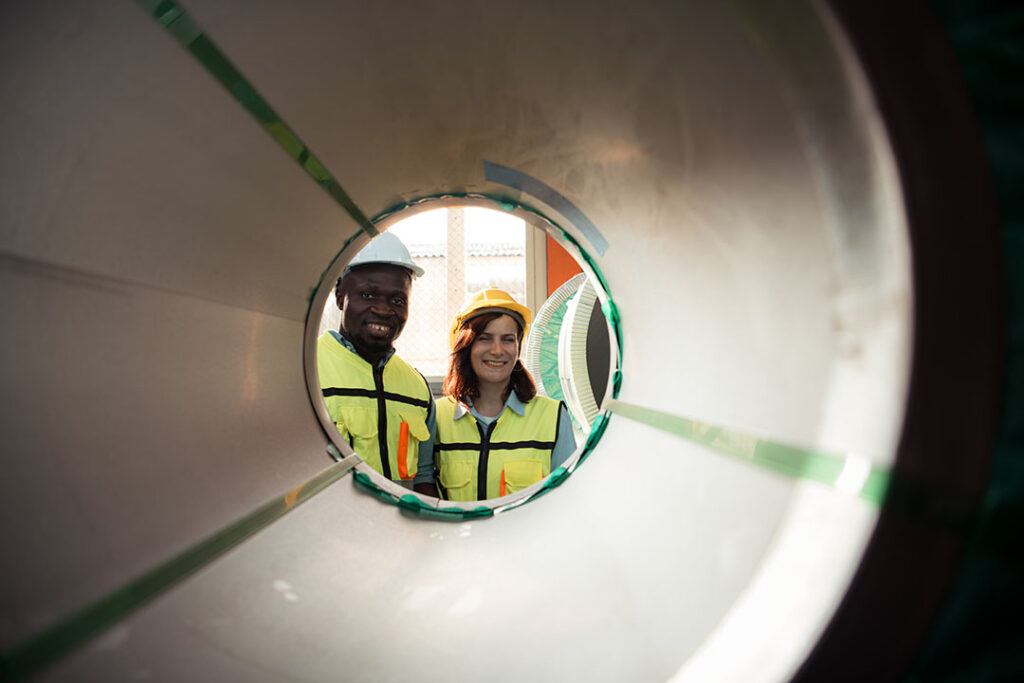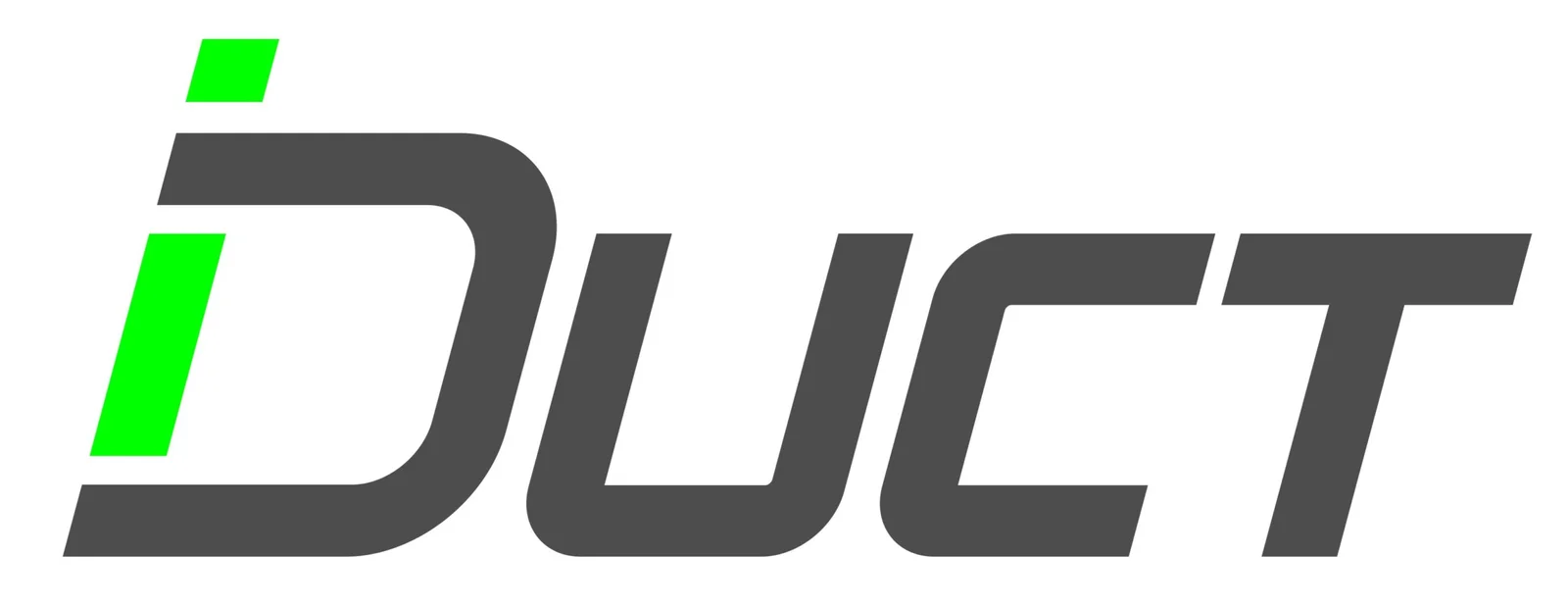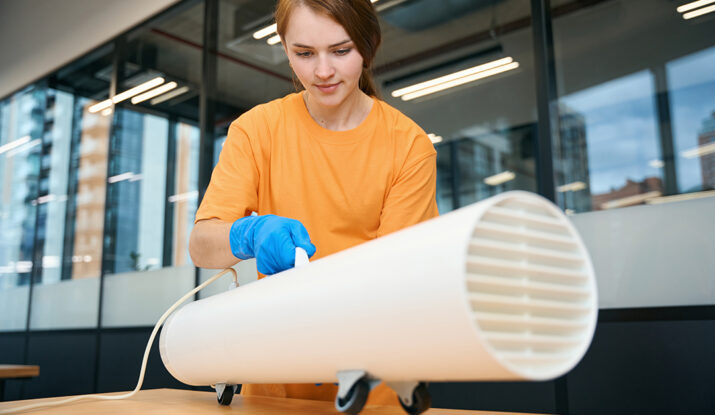Have you ever thought of what is hiding in your air ducts, or how does duct cleaning work? You might be surprised. Duct cleaning is far more than just ‘spring cleaning.’ This is an essential process in your HVAC system care as well as the improvement of your indoor air quality.
Dirt, pollen, and other contaminants collect on the surface and inner side of the screens; clients may breathe in these particles either through the screens or by having their families use the units. But how does duct cleaning work? Technicians use the right tools and vacuums to thoroughly clean every part so your system performs at optimum and fresh air is provided.
Common signs when you should consider duct cleaning include displaying more dust in the house and contracting allergies. It is a small effort to get a healthier and more comfortable home.
Understanding Duct Cleaning
Have you ever given yourself a thought as to why the air inside your house feels stuffy or why your electricity costs are higher than usual? It could be your air ducts troubling you. Cleaning a household duct is more complex than sweeping the floor.
It has to do so much with keeping your home’s HVAC system in perfect order while keeping the air and your money clean.

What Are Ducts?
Ducts can be described as the large blood vessels of a home’s heating and cooling system. They are corridors of an enclosed structure wherein cooled or heated air is transported to every available room. If you understand the whole process then you may know well about how does duct cleaning work.
As blood circulates through vessels and reaches every part of the human body, air circulates through ducts and throughout your house. Without them, your HVAC unit would be pretty useless; it is like a heart without the arteries that pump blood, though.
Why Clean Ducts?
But why, then, should you consider duct cleaning?
Healthier Atmosphere: Cleaner ducts lead to cleaner air. The accumulated material in the duct includes dust, pollen, mites, and sometimes mold spores. When air flows through, these particles can move around your house, causing allergies or respiratory problems.
This is so because cleaning ducts not only helps in significantly removing these pollutants but also provides better quality air that you inhale.
Energy Efficiency: IDusty and dirty ducts mean that your HVAC is going to have to work harder than it needs to. Try to picture this, would you have to place your straw between several crumpled-up tissue papers and try to blow into it? It’s hard.
Ducts should be kept clean so that the system can run without straining to use less energy; in some instances, this can lead to low electricity bills. If you are well aware of how does furnace duct cleaning work it eases you to lower the bill.
Are you prepared to begin to claim back your environment from your home? Thus, making sure your ducts are clean is a big step towards enjoying a healthier, enhanced, energy-efficient home. It is time to appreciate duct cleaning and let fresh and clean air circulate through your living space!
The Duct Cleaning Process
Some better decisions about keeping your home a healthier place to live in can be made when you know how does duct cleaning work.
When you hire professionals to clean your ducts they perform such activities and ensure that the system is free from dust dirt and any allergens. How does duct cleaning work process occurs should be explained step by step.
Initial Inspection
Inspection is the first procedure when it comes to duct cleaning. Starting with the assessment of ductwork, specialists start searching for dust and mold, as well as other debris. They look for:
- Dust and debris accumulation: The first sign that somebody should check is the presence of dust on the vents’ and registers’ surface.
- Signs of mold: Any colored or black section that may suggest the mold’s existence and any not-so-fresh smell that should hint at the mold’s presence.
- Wear and tear: Spotting damages, like disconnected or crushed ducts, can affect system performance.
This assessment helps them decide what techniques and tools are necessary for an effective cleaning.
Preparation for Cleaning
Before the actual cleaning starts, technicians prepare the area to protect your home and the HVAC system. That’s why you have to know how does home air duct cleaning work. Here’s what they typically do:
- Seal off vents and registers: Ensuring that dust and debris don’t spread to other parts of the house.
- Protect furniture and flooring: Covering nearby surfaces to prevent any messes or damage.
- Access points: If needed, create service openings in the ductwork for better access to internal areas.
These steps help in setting up a smooth and efficient cleaning process.
Cleaning Processes and Instruments
Upon preparing, the profession utilizes the right tools and methods to work on your ducts. Here’s a glimpse of what they use:
Powerful vacuums: The bottom line is that a high-efficiency vacuum is what is used to pull out dust and other problematic particles in much the same way you would use a vacuum cleaner throughout your ducting.
Rotary brushes: These brushes also clean the front surface of the ducts through brushing and scraping to ensure all the little corners are swept.
Compressed air tools: To get rid of the fine dust and ensure total cleanliness of the ducts.
Hope you got your answer of how do companies clean duct work. They help in achieving the purpose of cleaning the ducts effectively and greatly enhance the air quality within homes. As is expected when contemplating any aspect of ventilation cleaning, the venture is not a small one, as explained below by looking at how does duct cleaning work.
Signs That Your Ducts Should Be Cleaned
Sweeping the halls of your house’s arteries are the ducts is as compulsory as ensuring that everyone in your house will remain healthy. So the question remains: how does duct cleaning work & how do you know that you require duct maintenance? Below are signs that will tell you that it’s high time that you consider duct cleaning.
Visible Dust and Debris
Have you ever seen a cloud of dust appearing as soon as you switch on an air conditioning or heater system? If your answer is yes, that is a danger sign. Furniture and wreckage accumulate the same way as when you are trying to get a couple of passengers to leave the bus.
This buildup doesn’t only limit airflow but may also produce allergens you may not want to inhale in your house. Being expert on how does duct cleaning work will help you understand these.
- Dust on Vents: Take a closer look at your vents. Are they lined with dust? If so, that dust likely traveled from inside your ducts.
- Frequent Dusting Needed: Are you dusting your home more often than you’d like? Your ducts might be quietly conspiring against you.
Allergies and Lung Related Disorders
Don’t know what airs and being suffocated or experiencing sneezing and coughing fits for no apparent reason? It could be dirty ducts.
When they are laden with dirt, other than circulating clean air in the house, they also spread dust mites, pollen, and other allergens that are unpleasant to patients with delicate respiratory tracts.
Consider this: If one has allergies, it’s worse when inside rather than when outside, and this could be caused by ducts releasing allergens each time you change your thermostat. Do not be a captive to lousy air – consumption of clean ducts helps reduce these symptoms by a large margin.

Unusual Odors
Does your home smell mysterious when the heating and air conditioning systems are running? Bits of dirt collected in the ducts might be contributing to mold or mildew, resulting in a stench similar to mold or soil.
At other times, the smell might be absolutely ghastly –like the smell that you get from wet socks or stale food, which no amount of fragrance spray can mask.
- Musty Smells: More often, they point to mold, an intruder one wouldn’t like to host in the house, particularly in areas such as the duct system.
- Burning Smell: This could mean dust accumulation; this is especially noticeable when your system runs for the first time in a long time.
Remember, not paying attention to these smells is not just bad for smelling; it’s terrible for you. Maintaining clean ducts means that the only smell you are getting in your living space is from your scented candles or recently baked cookies, not from out-of-smell unknown entities coming through the vents. That’s why you must know how does duct cleaning work.
These signs are your home’s way of flying a flag saying, “We need our ducts cleaned!” It is, therefore, important to understand the duct cleaning process due to which much bigger problems can be arrested. So, if you notice any of these signs, it is about time your ducts get attention.
Post-Cleaning Maintenance
Maintaining clean ducts after professional cleaning is as important as giving your house fresh air each day. Having spent your money to get your ducts cleaned, it is times like these that you want to maintain the cleaned ducts at all costs. What this is not just about is the quality of air.
It is the care and management of your home’s lungs, more so the HVAC system – that’s what maintenance entails. Now it’s time to look at a couple of specific jobs that will help maintain duct cleanliness and quality air please any help click here.
Regular Inspections
Imagine your air ducts as the hidden highway for air in your house. Just like a road needs regular check-ups for potholes or damage, your ducts benefit from inspections. Why? Regular assessments help catch issues like blockages or leaks early on. A mere observer doesn’t make you a detective but just keep your eyes open.
- Schedule Yearly Check-ups: It is advisable to take your system to a professional at least once per year. They’ll spot any issues you could miss.
- DIY Checks in Between: You can sometimes need pros. Check vents and accessible parts for visible dirt or damage.
Consistent checks are like well-baby visits for your ducts, helping them stay in tip-top shape and catching potential problems before they escalate.
Air Filter Changes
Quite literally, air filters could be said to act as the guards of the HVAC system. They catch dirt and dust, ensuring only clean air circulates. So, what happens if you forget about them? Imagine trying to breathe through a dust mask—yep, not pleasant.
- Change Filters Often: Make it a routine to swap out filters every 1 to 3 months. If you’ve got pets or allergies, more frequent changes could be a lifesaver.
- Choose the Right Filter: Not all filters are equal. Pick one that suits your needs and home environment. Higher MERV ratings mean better filtration.
Keeping filters clean is like brushing your system’s teeth—simple yet essential for keeping everything fresh and efficient. These small actions can keep your air feeling crisp and healthy after a thorough duct cleaning session. Now you know how does professional duct cleaning work.
Cost of Duct Cleaning Services
When considering how does duct cleaning work, understanding the costs involved is crucial. This section will help you navigate the pricing landscape and explore what factors influence the price.
Average Cost Overview
Duct cleaning services usually vary in price, often between $300 and $500 for the average home. However, it is worth underlining that the detailed price can be rather variable depending on some parameters. Although it sounds kind of like when you order a pizza and the more toppings you put on it, the more expensive it gets.
Some smaller homes might see lower costs, while larger homes or complex systems can push the price tag higher.
The price also changes depending on the city or town you live in. Major cities may have higher costs due to the increased cost of living.
Additionally, seasonal demand can play a role. Ever notice how everyone wants their air systems checked as soon as summer hits? This demand spike can drive prices up temporarily.

Factors Influencing Cost
Contrary to what one might expect, duct cleaning has prices that need to be standardized. Various elements can affect what you end up paying:
- Size of the Home: Larger homes have more ducts, which means more cleaning is needed. So, big homes mean more enormous bills.
- Number of Vents: More vents mean more cleaning work. Just like washing clothes where the more clothes you want to be washed, the longer it takes, and more costly if you hire someone else to do the washing for you.
- Condition of the Ducts: If the ducts appear to resemble the dust storm sequences you see in the classic cowboy films, then you will be in for a lot of work when you try and scrub them out. More work translates to higher costs.
- Accessibility: If the ducts are confined or are in some hard-to-access regions, this may equal more labor, leading to a higher tag.
- Type of Duct System: Durability also plays a part in establishing price as well as the nature of your duct system. More complex systems require special attention and special tools.
Next time you’re planning to get your ducts cleaned, consider these factors like playing a strategic game of chess, each element plays a part in determining the next move in pricing. For better budgeting, you should know about how does air duct cleaning work.
FAQ: How Does Duct Cleaning Work
What is duct cleaning?
HEPA Filter of heating & air conditioning system keeps you safe from dirt, dust, and other particulates hidden in the ducts Cleaning is called the cleaning of duct. Supply air duct / Return air duct / Supply air register & grille/ and Return air register & grille / Heat exchangers/Cooling coils.
How often to clean facilities ducts?
Recommendations for cleaning ducts typically include a suggested 3- to 5-year interval.
Pros of air duct cleaning
Some duct cleaning can be a part of a proper home building or clean up to assist in removing pollutants and dust within a household, particularly upsetting factors including allergens along with humidity in the course of prolonged rainy seasons.
When would the ducts be cleaned?
The whole process will normally take from 2-4 hours depending on the size of the house and how long the duct system runs.
Can I clean the ducts myself?
While you can clean accessible parts like grilles and vents, professional equipment and expertise are often necessary for thorough cleaning.
What can I expect to occur during professional duct cleaning?
The technicians shall physically examine the system and then use equipment and tools to ensure all debris is gotten rid of more effectively, using a high-powered vacuum.
Is duct cleaning messy?
Professional duct cleaning should be mess-free. Technicians use equipment designed to contain dust and debris during the process.
Is there an advantage for individuals to clean their ducts?
It will not eradicate health issues, but it can help soothe the sinuses of those people struggling with allergies or asthma by reducing dust and allergens that would otherwise be floating around in the air.
Should My Ducts Be Cleaned? How Will I Know?
These include dust accumulation, the presence of molds, ugly smells, or dirty filters, which are easily seen. The inability to explain specific allergies might also be a result of dirty ducts.
Does cleaning of ducts help you to cut down on energy bills?
Projection could mean that improved airflow can be attained if the ducts are clean, thus increasing the efficiency of HVAC.
Conclusion
On this basis, duct cleaning is essential not only for cleaning the air on premises but also for the efficient functioning of the HVAC systems. Maintenance of vents contributes to the increase of system life and the possibility of health issues. Want to ensure your air is at its best & how does duct cleaning work? Plan for regular duct maintenance and enjoy the freshness.


